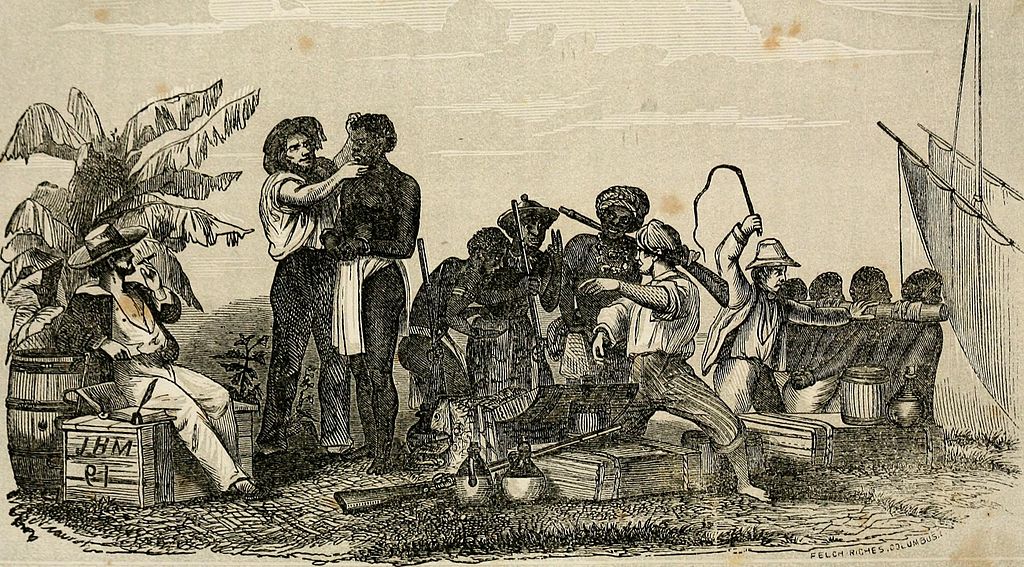Were The Miracles of Jesus A Late Legend?
In my last article, I addressed the claim that Jesus wasn’t a real person. That view isn’t held by many people. A more common view, though, is the charge that all of the supernatural claims about the life of Jesus are late legends. All the miracles he performed, the predictions he made, and, of course, his coming back from the dead and being seen by his followers – that stuff is too unbelievable to be true. So, it must have been added in after the fact. Jesus’s followers didn’t believe in the supernatural stuff. It was all added in later by a bunch of men with an agenda in some smokey room.
Dan Brown – Good Author, Terrible Historian
I love a good conspiracy story. Conspiracy theories try to explain an event by ignoring the accepted explanation, proposing some secret, unknown facts that have been kept from us, and implicating multiple actors pulling the strings behind the scenes for purposes of money, sex, or power. Usually power. There is something exhilarating about unwinding a conspiracy. Also, some sort of weird peace we get in knowing that there is a reason things are so messed up. And, it took multiple people working in secret behind the scenes to make it so.
When Dan Brown’s The Da Vinci Code was first released, I was completely pulled in by his alternate theories of church history. He seemed to have access to resources I did not – to things the church fought to keep hush hush. For me, it played into something I had been observing for a number of years – men with power will always seek to keep that power and gain more power when given the chance.
One of the characters in The Da Vinci Code makes some “revelations” regarding the course of Christianity that would rock it to its core. Sir Leigh Teabing proclaims that the original followers of Jesus only thought he was a mortal man, all the “Jesus is God” stuff was added at the Council of Nicea in 325 AD, and it was then that the Council canonized the books of the Bible.
THe good news is there’s an easy way to tell what the early followers of Jesus thought about his miracles and resurrection. They wrote it down. And, they wrote it down really early.
When Was Acts Written?
Destruction of the Temple
If we want to start dating the events of the early church and find out what the first Jesus followers believed, we should start with Acts. Acts is the history book of the New Testament. The Book of Acts was written by Luke – a historian, doctor, and traveling companion of Paul’s for many of his journeys. When this book was written is important. Using it, we can use it to build our case for when early Christians started to believe that Jesus was “more than just a man”.
I want to start dating Acts by looking at a few things that actually aren’t in Acts. The first event of great importance that isn’t in Acts is the destruction of the Temple in Jerusalem by the Romans in 70 AD. This is a major event. Luke is credited by many sources as being a really accurate historian. It is hard to believe that he would leave out such an important event had it occurred when he was writing the Book of Acts.
Also, one of the supernatural things that Jesus claimed to be able to do was to predict the future. Before his death, Jesus predicted that the temple would be destroyed (Matthew 24:1-2, Mark 13:1-2, Luke 21:5-6). So, if the temple had been destroyed by the time Luke wrote Acts, don’t you think he would have added it in? Luke would have been able to show that what Jesus predicted came true. But, he didn’t record it. Because it hadn’t happened yet. So, we can at least date Acts at 70 AD.
Just before the Temple was destroyed, there was a siege of Jerusalem by the Roman army. It was an intensely destructive time. This siege started in 67 AD and lasted until the Temple was destroyed in 70 AD. The siege is not documented in Acts. With this added piece of data, we can date Acts to at least 67 AD.
Why is it relevant that these events were left out? Certainly Luke didn’t document every historical event of the time. This is correct. But, these are major events – especially in the lives of the Jews. It would be like reading a textbook today on American history and there not being anything in it about the destruction of the World Trade Center. The date of that event is so well known globally it is known simply by its date – 9/11. So, if you read an American history book, and 9/11 isn’t in it, the book was probably written before 9/11/2001 because that event is missing. We can make the same conclusion about Acts. Two of the most important historical events of the era are missing. So, we can date it before those events occurred.
The Deaths of Paul, Peter, and James
The next historical events I want to use to help date the book of Acts are the deaths of some of the most prominent figures in the New Testament apart from Jesus; Paul, Peter, and James, the brother of Jesus.
Paul is responsible for more of the books in the New Testament than any other author. He was also a traveling companion of Luke’s – the author of Acts. While we don’t have the exact details of Paul’s death, the early church fathers recorded that he was executed during the reign of Emperor Nero somewhere between 64 and 67 AD. Yet, Paul’s death is not mentioned in Acts.
Peter was also one of the most important secondary characters in the Gospels and in Acts. He was one of Jesus’ inner circle. He is reported to have been crucified around the same time as Paul. His death is not mentioned in Acts either.
James is a little different than Paul and Peter. Even though he was the biological half-brother of Jesus, he did not believe that Jesus was the Messiah until Jesus appeared to him after his resurrection. When that happened, though, James became one of the pillars of the first church in Jerusalem. Josephus, a Jewish historian of the times, documented that James was stoned and beaten to death in 62 AD. Nothing about his death is recorded in Acts.
Why is this relevant? Because Luke took the time to document the deaths of Stephen (Acts 7:54-60) and James, the brother of John (Acts 12:1-2). Neither of these men was as important to the church as James, Peter, or Paul. And yet, Luke records their deaths. But, he doesn’t record the deaths of three of the most important figures in the early church. Given this, I think it is reasonable to date Acts to around 61 AD – before the death of James.
Historians tell us that Jesus died between 33 and 36 AD. If that’s the case, the events of the early church were written only 25 years or so after the death of Jesus. Now, that may seem like a long time gap. But, if you ask any historian, that gap is almost nothing. I graduated high school in 1994. That’s 27 years ago. And yet, I can recall a lot of details about activities my senior year – football games, basketball games, incidents in classes, my graduation ceremony, and the party my parents threw for me afterward. So, 25 years is nothing in terms of documenting historical events and it shouldn’t give us any cause for concern.
Dating The Gospel of Luke
At the beginning of Acts, Luke reminds Theophilus that this was his second book. He had written a book before Acts that told about the things Jesus said and did. That book is the Gospel of Luke. So, if Acts was written in 61 AD, we can at least start there with the dating of the book of Luke. In actuality, though, we can get it further back in time than that.
Somewhere around 63 and 65, Paul wrote his first letter to Timothy. In it he gave Timothy some advice on how to deal with compensating local pastors (1 Timothy 5:17-18). Paul tells Timothy “For Scripture says, ‘Do not muzzle an ox while it is treading out the grain,’ and ‘The worker deserves his wages.’ “. Notice where Paul says he is getting his words. From Scripture. That means wherever he got it from 1) had to come before he wrote this letter and 2) was already widely accepted as an authoritative text that is to be considered the words of God. The first quote regarding the ox comes from Deuteronomy 25:4. The second quote, however – about the worker deserving his wages – doesn’t come from the Old Testament. In fact, the only other place it is found is in the Gospel of Luke. So, by the time Paul is writing this letter, Luke’s Gospel had to have been written. And it had to have been considered Scripture by the church.
Another clue we can look at to help us date the Gospel of Luke can be found in Paul’s first letter to the Corinthian church. After Paul had left them, they returned to their former lifestyle – sleeping with multiple partners, sleeping with relatives, partaking in pagan celebrations. One of the things that Paul addresses is their habit of getting drunk at the Lord’s Supper. He tells them:
23 For I received from the Lord what I also delivered to you, that the Lord Jesus on the night when he was betrayed took bread, 24 and when he had given thanks, he broke it, and said, “This is my body, which is for[a] you. Do this in remembrance of me.”[b] 25 In the same way also he took the cup, after supper, saying, “This cup is the new covenant in my blood. Do this, as often as you drink it, in remembrance of me.” 26 For as often as you eat this bread and drink the cup, you proclaim the Lord’s death until he comes.
1 Corinthians 11:23-26 (ESV)
Notice what Paul says here; “what I also delivered to you”. Paul was saying “look, you numskulls, when I was there the first time, I taught you how to do the Lord’s Supper”.
OK, so why is this significant? All of the Gospels have the scene of the Lord’s Supper. The thing is, though, that the way Paul writes it is the way it appears in Luke 22:14-30. Which means Luke had to have written it before Paul did in his first letter to the Corinthians. Paul’s first trip to Corinth – the trip where he taught the Corinthians how to do the Lord’s Supper – was in 51. So, The Gospel of Luke had to have been written at or around that time.
Now we’re as close as 15 years to the death of Jesus and when his followers were writing and preaching about the supernatural things he did. But, this isn’t where the dating ends We can actually get even closer to the death of Jesus with eyewitness testimony to the things he said and did.
Dating The Gospel of Mark
If we look at the first few verses of the book of Luke, we see this:
1 Inasmuch as many have undertaken to compile a narrative of the things that have been accomplished among us, 2 just as those who from the beginning were eyewitnesses and ministers of the word have delivered them to us, 3 it seemed good to me also, having followed all things closely for some time past, to write an orderly account for you, most excellent Theophilus, 4 that you may have certainty concerning the things you have been taught.
Luke 1:1-4 (ESV)
Notice what Luke says in the first verse; that others have written down accounts of Jesus’ life. Luke’s account isn’t the first. In verse 3, he also tells us why he feels he needs to write his account, in addition to the ones that already exist. Luke tells Theophilus that he wants to give him/her/they (whoever Theophilus was) an orderly account. Now, why would he say that? Wouldn’t you think that if I gave you an accounting of historical events, they would be in order?
One of the early church fathers, a man names Papias (60-120 AD) gives us a clue about the other accounts of Jesus’ life that were circulating at the time. Papias wrote that he learned information regarding the Gospel of Mark from the Apostle John. Papias tells us that Mark was writing down the account of the Apostle Peter. But, Mark didn’t write the events down in the order they occurred; his gospel is organized more by topic or theme.
Luke knew there were other accounts that Theophilus has seen – accounts that were out of order. Which is why he had to state that his account was written in order. The account that he was referring to was Mark’s. So, that means all of the stuff written down in Mark had to have been done before Luke wrote his gospel.
A questions does have to be asked though; how do we know that the “account out of order” was Mark’s? Couldn’t it have been another account? Sure. It could have been another source. Luke even tells us that he examined multiple sources in the first verse of his account. But, there is more evidence that Mark’s account came before Luke’s. Luke contains about 50% of Mark’s account. That’s a big chunk. So, Luke used Mark as a source to compose much of his account. If Luke was written between 51-53 AD, that means Mark predates that account. Some would say as early as 48 AD.
The First Creed
Throughout Christianity’s history, groups of leaders have come together to discuss important ideas surrounding the clarification of doctrinal issues or distinguishing truth from error. Many of these councils would put out statements afterward stating what they believe as a result of the council’s discussion (the word “creed” comes from the Latin word “credo” which means “I believe”).
Creeds are great because we can establish exactly what the church thought on specific topics at a given time. Some of the earliest creeds are The Apostles’ Creed (340/700 AD), The Nicene Creed (325/381AD), and The Athanasian Creed (5th-6th Century AD).
You’ll notice, though, that the dates on these creeds come somewhat late. They all come 300 years or more after Jesus’ death. That’s a lot of time for legends to develop, details to be forgotten, things to be added that can’t be verified, and things to be misunderstood.
Thankfully, this isn’t an issue for us. It turns out, we can find what many consider the first creedal statement much, much earlier. To read it, we’ll return to 1 Corinthians – which Paul wrote from Ephesus somewhere around 53-57 AD. And, as we’ll see, he spends a lot of time in this letter reminding the church there of the things he taught them when he was there in 51 AD. See, groups of people had come in after Paul and started spreading an alternate gospel. So, Paul felt he needed to set them back on track.
Paul writes:
Now I would remind you, brothers,[a] of the gospel I preached to you, which you received, in which you stand, 2 and by which you are being saved, if you hold fast to the word I preached to you—unless you believed in vain.
1 Corinthians 15:1-8 (ESV)
3 For I delivered to you as of first importance what I also received: that Christ died for our sins in accordance with the Scriptures, 4 that he was buried, that he was raised on the third day in accordance with the Scriptures, 5 and that he appeared to Cephas, then to the twelve. 6 Then he appeared to more than five hundred brothers at one time, most of whom are still alive, though some have fallen asleep. 7 Then he appeared to James, then to all the apostles. 8 Last of all, as to one untimely born, he appeared also to me.
Let’s start by looking at the first verse. There are some key context clues that will help establish our timeline. First, Paul tells the Corinthians that he wants to remind them of something; something that he preached to them already the first time he was there, and that they received. What is it that he is going to remind them of? The gospel. Paul is about to give us what Christians believed right after Jesus died. But, this isn’t the first time he has said it – it’s a few years after the first time he taught it to them.
Now, we move to the third verse. Paul tells the Corinthians that he delivered to them something he had already received. The first time he told them the gospel, he didn’t make it up on the spot; he had to have gotten it from somewhere. So, the gospel message that he is about to give them predates his first visit to Corinth.
What was the gospel that Paul gave to the Corinthians? That starts in verse 3b. Jesus died for our sins. OK. Nothing supernatural there. Paul can say whatever he wants. Next, he was buried. OK, no problem there. After people die they usually get buried. Then, Paul says Jesus was raised from the dead on the third day and then appeared to his followers.
Uh oh.
That’s some pretty wild claims right there. Supernatural, one might say. In fact, it appears that Jesus’ followers did in fact believe he rose from the dead. And it appears in writings that were composed at the most 20 years after Jesus’ death. However, the letter is actually reminding them of stuff he told them on his trip there in 51 AD. That’s only about 15 years after Jesus’ death. But, we can get closer. Because Paul said he got the message from somewhere, too. Before he got to Corinth. When and from whom Paul got this message is a topic for another article, but it was at least in the 40s. Maybe even 3 years after Jesus’ death.
Paul does us another huge favor, though. After he gets done reminding the Corinthians what the gospel is, he gives them a rather lengthy list of eyewitnesses; Peter, the original apostles, 500 other people Jesus had appeared to (some of which had died already), James his brother, the rest of his followers, and then finally to Paul himself. Why does Paul give them this list? Because he is saying “look, if you don’t believe me on these things, there are hundreds of other eyewitnesses who can back up what I am telling you. Go talk to them if you don’t believe me”. If this was only 20 years after Jesus’ death, there would be plenty of people you could go talk to still that would have witnessed it. Or contradicted Paul’s story if he was lying.
The Sources Attesting To Jesus’ Miracles and Resurrection Were Early
Based on the historical evidence written in the New Testament documents, we can see that the eyewitnesses to Jesus’ life, death, and resurrection almost immediately began telling others about the things Jesus said and did. The accounts of Jesus’ miracles, the predictions he made, and the things the apostles believed were written down shortly after they happened. They weren’t added to the story hundreds of years later. As entertaining as these conspiracy theories may be, that’s all they are; entertainment. With little to no istorical research to back them up.
Share This Story, Choose Your Platform!
latest video
news via inbox
Subscribe and never miss an update!








Excellent article! I like the way you trace back the timeline.
Thanks, Kevin!
[…] first question to answer is, were the eyewitnesses there? We looked previously at several good reasons to date the gospels and the book of Acts very early. Given that the accounts were written only a few decades after the events they describe, the […]